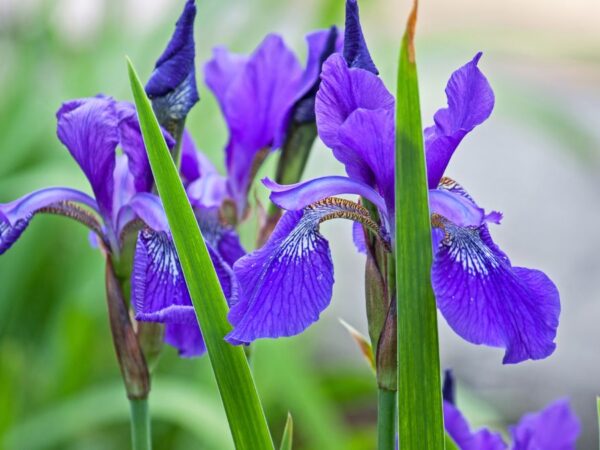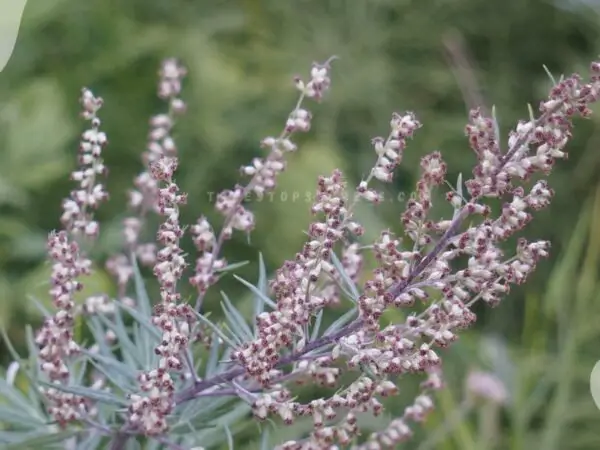Curious about the longevity of hybrid poplar trees? Wondering how long native poplars and hybrids can thrive in your landscape? Hybrid poplars stand out for their rapid growth, but their lifespan may surprise you. While they grow swiftly, reaching maturity within 6 to 10 years, their overall life expectancy contrasts sharply with this quick development. Typically living up to 30 years or more, these trees offer a unique balance between speed and endurance in the world of forestry.
Whether you're considering planting hybrid poplars for landscaping or commercial purposes, understanding their lifespan is crucial. Let's delve into the fascinating world of hybrid poplar tree longevity and explore what factors can influence how long these trees live.
Key Takeaways
- Hybrid poplar trees have a lifespan of around 30 to 50 years, depending on various factors such as environmental conditions and maintenance.
- To ensure the longevity of hybrid poplar trees, provide proper care including regular watering, pruning, and protection from pests and diseases.
- The benefits of hybrid poplar trees include fast growth rates, potential for biomass production, and phytoremediation capabilities.
- Drawbacks of hybrid poplar trees may include susceptibility to diseases, invasive root systems, and the need for regular maintenance.
- Commercially, hybrid poplar trees are used for timber production, paper manufacturing, and as a source of biofuel.
- Hybrid poplar trees can have a positive environmental impact by sequestering carbon, preventing soil erosion, and improving air quality.
Lifespan of Hybrid Poplar Trees
Longevity Factors
Hybrid poplar trees typically live for 30 to 50 years. Their lifespan is influenced by genetics, environmental conditions, poplar tree care, and maintenance practices. For instance, regular pruning and disease prevention can help extend the life of hybrid poplar trees significantly. These factors play a crucial role in determining how long these trees will thrive.
Factors such as genetics and environmental conditions are essential determinants of the lifespan of hybrid poplar trees. Proper maintenance practices like regular pruning and disease prevention can have a substantial impact on their longevity. By taking care of these aspects, tree owners can ensure that their hybrid poplars remain healthy for an extended period.
Growth Rate
One remarkable characteristic of hybrid poplar trees is their rapid growth rate. Under ideal conditions, they can grow up to 8 feet per year! This fast growth makes them highly suitable for timber production projects where quick results are desired or phytoremediation initiatives aimed at cleaning up contaminated soil efficiently.
Hybrid poplar trees are renowned for their rapid growth rate which allows them to grow up to 8 feet annually under favorable conditions. This exceptional trait makes them ideal choices for timber production projects requiring swift development or phytoremediation efforts addressing soil contamination issues effectively.
Height Achievements
In just a few years, hybrid poplar trees can reach impressive heights ranging from 40 to 70 feet tall! Some varieties have been known to surpass this range and grow as tall as 100 feet. Due to their towering stature, these trees are commonly used in landscaping projects or planted strategically as windbreaks.
Hybrid poplar trees exhibit remarkable height achievements by reaching between 40 to 70 feet within a short timeframe after planting. Certain varieties even exceed this height range by growing up to an impressive height of around 100 feet tall! Their significant vertical growth makes them popular choices for landscaping purposes or when establishing windbreaks.
Care Tips for Hybrid Poplars
Planting Tips
Spring is the ideal time to plant hybrid poplar trees. This season allows the trees to establish their roots before extreme weather conditions. Early spring, with moist but not waterlogged soil, provides optimal planting conditions.
For successful growth, hybrid poplar trees require proper spacing of 10 to 15 feet between each tree. The spacing ensures that each tree receives enough sunlight, airflow, and nutrients based on its variety and intended purpose.
Watering and Nutrition
During their establishment phase, poplar trees need regular watering for root development and overall health. Balanced nutrition from organic fertilizers or slow-release granules supports vigorous growth in these trees.
To maintain a single-trunk structure in hybrid poplars, it's essential to prevent suckering - the growth of new shoots at the tree base. Regular pruning and removing suckers help control this issue effectively.
Benefits of Hybrid Poplars
Rapid Growth
Hybrid poplar trees are known for their rapid growth. Their quick development makes them ideal for projects like biomass production and reforestation. This fast growth rate means earlier harvests and quicker carbon sequestration. For instance, in just a few years, hybrid poplars can reach heights that other tree species may take decades to achieve.
Hybrid poplar trees have an exceptional ability to absorb pollutants from the soil and water due to their phytoremediation potential. They can break down heavy metals and organic compounds found in contaminated areas, making them valuable for environmental cleanup efforts. Their extensive root systems play a crucial role in stabilizing soil structure, preventing erosion, and improving overall soil health.
Carbon Sequestration
A significant benefit of hybrid poplar trees is their contribution to carbon sequestration. Through photosynthesis, these trees absorb carbon dioxide from the atmosphere and store it within their biomass. By planting hybrid poplars strategically, we can help combat climate change by reducing greenhouse gas levels over time. This process showcases how native ecosystems like forests can actively participate in combating environmental challenges.
Drawbacks of Hybrid Poplars
Invasive Species Risk
Hybrid poplar trees are not invasive species, but they can spread through suckering if left unattended. Regular monitoring and management practices are crucial to prevent unwanted spread. By controlling the growth and expansion of hybrid poplars, you can avoid potential issues with them taking over your landscape.
-
Pros:
-
Not considered invasive species.
-
Provide shade and aesthetic value to landscapes.
-
Cons:
-
Can spread through suckering.
-
Require regular monitoring and management to control growth.
Impact on Wildlife
Hybrid poplar trees play a vital role in supporting wildlife by providing habitats and food sources for various animals. Birds, mammals, and insects benefit from the shelter, nesting sites, and seeds offered by these trees. When strategically planted in wildlife-friendly landscapes, hybrid poplars contribute to biodiversity conservation efforts.
- Key Information:
- Trees offer shelter and food sources for birds, mammals, insects.
- Planting hybrid poplars supports biodiversity conservation efforts.
Suckering Behavior
One significant drawback of hybrid poplar trees is their tendency to produce suckers from their root systems. This behavior can lead to overcrowding if not managed properly through regular pruning or by selecting non-suckering varieties. Controlling sucker growth is essential for maintaining the desired tree structure.
- Regular pruning helps manage suckering behavior.
- Selecting non-suckering varieties prevents overcrowding issues caused by excessive sucker growth.
Commercial Uses
Timber Production
Hybrid poplar trees are favored for timber production because of their rapid growth and straight trunks. They are typically harvested when they are between 20 to 30 years old, reaching the ideal size for lumber. The wood from hybrid poplars is utilized in a variety of applications such as furniture making, construction projects, and paper manufacturing.
In landscaping projects, hybrid poplar trees serve multiple purposes due to their aesthetic appeal and quick growth rate. These trees can be strategically planted as shade providers, windbreaks against harsh weather conditions, or privacy screens. Their vivid foliage and appealing bark contribute to enhancing the visual allure of gardens and parks.
Landscaping Uses
Hybrid poplar trees offer an array of benefits in landscaping endeavors thanks to their fast growth rate and attractive features. Whether it's creating shaded areas in gardens or establishing natural barriers against strong winds or prying eyes, these versatile trees excel at fulfilling various landscaping needs. Their adaptability makes them a popular choice among landscapers seeking visually pleasing yet functional greenery options.
Environmental Impact
Native Birds and Mammals
Hybrid poplar trees play a crucial role in supporting native wildlife such as woodpeckers, chickadees, squirrels, and rabbits. These trees provide essential resources like seeds, shelter, and nesting sites that attract diverse species. By planting hybrid poplars in both urban and rural areas, individuals can significantly enhance the biodiversity of local ecosystems. This increased wildlife diversity contributes to a healthier environment for various animals to thrive.
- Pros:
- Attracts native birds and mammals
- Enhances wildlife diversity
- Examples:
- Woodpeckers seeking shelter in hybrid poplar trees
- Squirrels using these trees for nesting opportunities
Carbon Storage vs. Sequestration
The distinction between carbon storage and sequestration is vital when considering the environmental impact of hybrid poplar trees. While carbon storage refers to the long-term retention of carbon within tree biomass and soil, carbon sequestration focuses on actively removing carbon dioxide from the atmosphere through photosynthesis. Hybrid poplars excel at both functions by effectively storing carbon within their biomass while also sequestering additional carbon through their growth process. This dual capability makes hybrid poplar trees valuable assets in combating climate change by contributing to overall greenhouse gas reduction efforts.
- Carbon Storage:
- Retains carbon in tree biomass.
- Contributes to long-term environmental benefits.
- Carbon Sequestration:
- Removes CO2 from the atmosphere. 2.. Supports climate change mitigation efforts.
Genetically Modified Considerations
Hybrid poplar trees can live for up to 40 years, but some genetically modified (GM) varieties have been developed to enhance specific traits. These GM hybrids might possess improved disease resistance or other beneficial characteristics, potentially impacting their lifespan positively.
However, before introducing GM hybrid poplars into natural environments, it's crucial to consider the potential ecological consequences. The altered genetic makeup of these trees could have unforeseen effects on local ecosystems and biodiversity, which may influence not only the trees' longevity but also the surrounding environment.
Some hybrid poplar varieties are genetically modified (GM) to exhibit particular traits like enhanced disease resistance or faster growth rates. While this modification can offer benefits such as increased productivity and sustainability in commercial plantations, it is essential to evaluate the broader implications before widespread adoption. Introducing GM hybrid poplars into natural settings without fully understanding their ecological impacts could lead to unintended consequences that affect not only the trees themselves but also the entire ecosystem they inhabit.
Planting and Growing Conditions
Soil Requirements
Hybrid poplar trees thrive in well-drained soils with a pH level ranging from 5.5 to 8.0. They are versatile and can grow in various soil types, including sandy or clay soils. Enhancing the soil with organic matter or compost during planting can boost fertility and retain moisture for optimal growth.
-
Pros:
-
Versatile adaptation to different soil types.
-
Improved fertility and moisture retention with added organic matter.
-
Cons:
-
Strict pH range requirements.
-
Additional effort needed for soil preparation.
Climate Adaptability
These trees are resilient across North America's diverse climates, enduring cold winters and hot summers found in USDA hardiness zones 3 to 9. Choosing suitable hybrid poplar varieties tailored to specific climate conditions is crucial for ensuring successful growth.
-
Selecting Appropriate Varieties: Hybrid poplars need careful selection based on the local climate.
-
Zone Considerations: Understanding the USDA hardiness zone of your area helps determine if hybrid poplars will thrive.
Are Poplar Trees Beneficial or Detrimental?
Pros and Cons Overview
Hybrid poplar trees are advantageous due to their rapid growth, making them ideal for timber production. These trees also possess phytoremediation capabilities, aiding in soil and groundwater cleanup. However, maintaining these benefits requires regular upkeep to control suckering and prevent overcrowding. Understanding the advantages and disadvantages of hybrid poplars is crucial for making informed decisions about planting them.
When it comes to the positives:
- Rapid growth makes hybrid poplar trees suitable for timber production.
- Phytoremediation abilities help clean up soil and groundwater contaminated areas.
On the flip side:
- Regular maintenance is needed to manage suckering.
- Overcrowding can be a concern if not controlled properly.
Planting hybrid poplars offers numerous benefits but demands attention to detail in maintenance practices. Balancing the advantages of rapid growth with the need for ongoing care ensures that these trees thrive while avoiding potential issues like overcrowding or unchecked spread through suckers. Being aware of both sides allows landowners to harness the full potential of hybrid poplar trees while mitigating any drawbacks they may present.
You've learned about the lifespan, care tips, benefits, drawbacks, commercial uses, environmental impact, genetically modified considerations, and planting conditions of hybrid poplar trees. These versatile trees offer a host of advantages but also come with certain challenges. Understanding their characteristics can help you make informed decisions when considering them for your property or projects. Remember to weigh the pros and cons carefully before planting hybrid poplars to ensure they align with your goals and environmental values.
Incorporating hybrid poplar trees into your landscape can bring numerous benefits, from fast growth rates to eco-friendly advantages. By following the care tips provided and considering the various aspects discussed in this article, you can maximize the potential of these trees while minimizing any drawbacks. Take action today to explore the world of hybrid poplars and see how they can enhance your surroundings.
Frequently Asked Questions
How long do hybrid poplar trees typically live?
Hybrid poplar trees have a lifespan of around 30 to 50 years. Factors like environmental conditions, care, and maintenance can influence their longevity. Regular pruning and proper watering can help extend their life span.
Are hybrid poplar trees beneficial for the environment?
Yes, hybrid poplar trees offer various environmental benefits. They help in carbon sequestration, soil erosion prevention, and provide habitat for wildlife. They contribute to improving air quality by absorbing pollutants.
What are some drawbacks of planting hybrid poplars?
One drawback of hybrid poplars is their invasive root system that may cause issues with underground utilities or nearby structures. They also require regular maintenance due to fast growth rates and susceptibility to certain pests and diseases.
Can hybrid poplar trees be genetically modified?
Yes, there are genetically modified (GM) varieties of hybrid poplar trees developed for specific purposes such as faster growth or enhanced resistance to pests or diseases. GM considerations should align with regulations and ethical standards regarding biotechnology use.
How should I care for my planted hybrid poplar tree?
Proper care involves regular watering during dry periods, mulching around the base to retain moisture, occasional pruning to maintain shape and remove dead branches, and monitoring for signs of pests or diseases. Consulting with a professional arborist can provide tailored care tips based on your specific location.
Image Source: Paid image from CANVA





